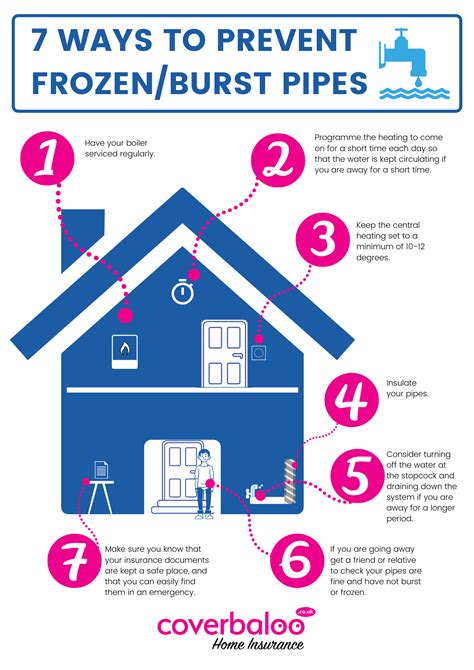How To Prevent Frozen Pipes This Winter
Winter's icy grip can wreak havoc on your home's plumbing system, leading to burst pipes and costly repairs. Preventing frozen pipes is crucial, saving you from potential water damage and hefty repair bills. This comprehensive guide outlines practical steps to protect your pipes from freezing temperatures and keep your home comfortably warm and dry all winter long.
Understanding the Risks of Frozen Pipes
Before diving into preventative measures, let's understand why pipes freeze. Frozen pipes occur when water inside the pipes expands as it freezes, creating pressure that can lead to cracks and ultimately bursts. This is particularly problematic in areas with exposed pipes, poorly insulated walls, or insufficient heating. The longer a pipe remains frozen, the greater the risk of damage.
High-Risk Areas in Your Home:
- Exposed exterior walls: Pipes running along exterior walls are highly vulnerable to freezing temperatures.
- Attics and crawl spaces: These unheated areas often experience extreme temperature fluctuations.
- Uninsulated basements: Basements lacking proper insulation are susceptible to freezing, especially during prolonged cold snaps.
- Cabinets under sinks: Pipes located in cabinets under sinks, especially those on exterior walls, are at significant risk.
Proactive Steps to Prevent Frozen Pipes
Now that we understand the risks, let's explore practical steps to prevent frozen pipes. These strategies are categorized for easy implementation.
1. Insulation is Key:
Insulating your pipes is the most effective preventative measure. This involves wrapping pipes with insulation sleeves, foam pipe insulation, or heat tape. You can find these materials at most hardware stores. Pay particular attention to pipes in vulnerable areas like attics, crawl spaces, and exterior walls.
For exposed pipes: Consider using heat tape designed for pipes. This provides additional protection, especially during extreme cold. Remember to follow manufacturer's instructions carefully when using heat tape.
2. Maintain Consistent Indoor Temperature:
Keeping your home consistently warm, even when you're away, is crucial. Setting your thermostat to at least 68°F (20°C), even when you're not home, significantly reduces the risk of freezing. If you'll be gone for an extended period, consider asking a neighbor to check on your home periodically.
3. Let the Water Drip:
Allowing a slow drip of water from faucets served by exposed pipes helps maintain water flow and prevents freezing. This is particularly effective for faucets in frequently used areas like bathrooms and kitchens. A slow drip is sufficient; you don't need a torrent of water.
4. Seal Gaps and Cracks:
Caulk any gaps or cracks around windows, doors, and pipes to prevent cold air from entering your home. This simple step significantly improves insulation and helps maintain a consistent indoor temperature.
5. Know Where Your Shut-Off Valves Are:
Locate your main water shut-off valve and any individual shut-off valves for specific areas of your home. Knowing where these valves are located is crucial in case a pipe does freeze, allowing you to quickly shut off the water supply and minimize water damage.
6. Open Cabinet Doors:
Open cabinet doors under sinks, especially those located on exterior walls. This allows warmer air to circulate around the pipes, reducing the risk of freezing.
What to Do If a Pipe Freezes:
Despite your best efforts, a pipe might still freeze. If this happens, do not attempt to thaw the pipe with a blowtorch or other open flame. This is extremely dangerous and can cause a fire. Instead:
- Turn off the water supply to the affected area.
- Apply heat gradually to the frozen pipe using warm towels, a hair dryer (on a low setting), or heat tape (following manufacturer instructions).
- Monitor the pipe closely as it thaws. If the pipe bursts, immediately shut off the main water supply and contact a plumber.
By following these preventative measures and understanding what to do in case of a frozen pipe, you can significantly reduce the risk of costly repairs and keep your home comfortable throughout the winter. Remember, prevention is always better than cure when it comes to frozen pipes!
